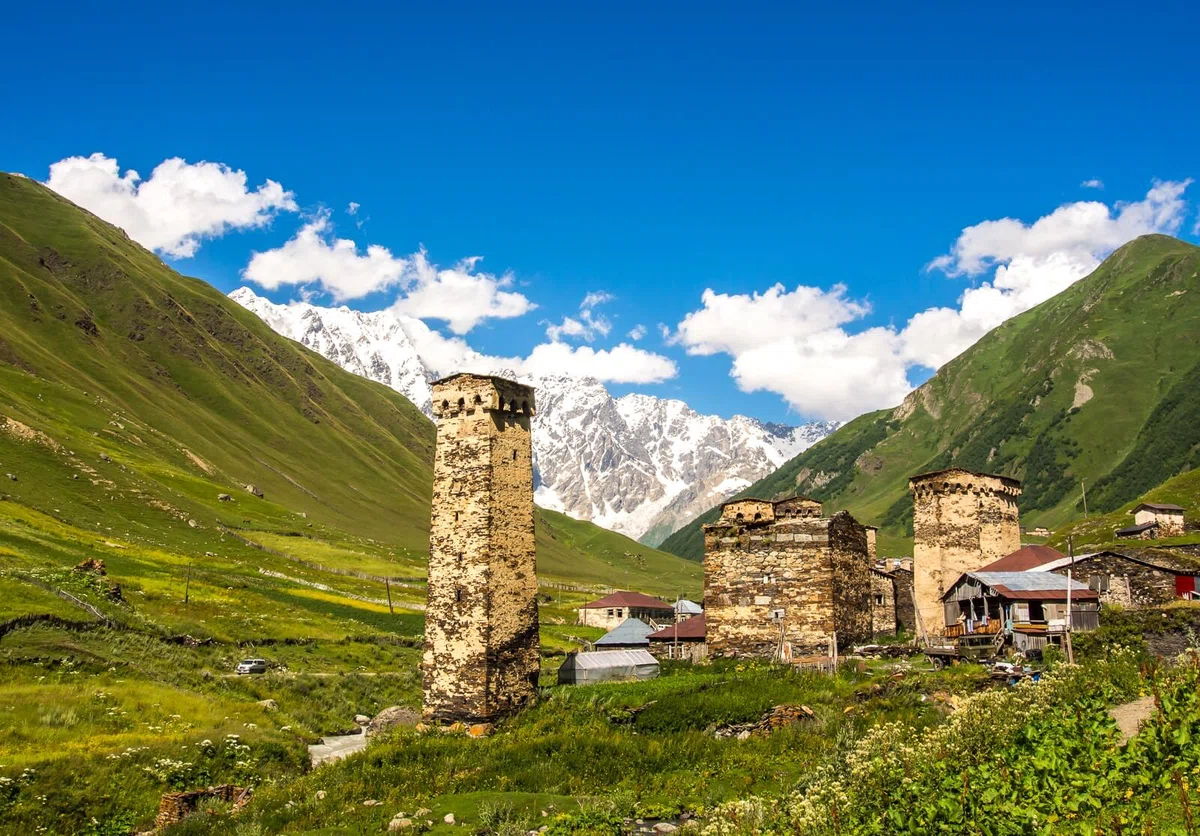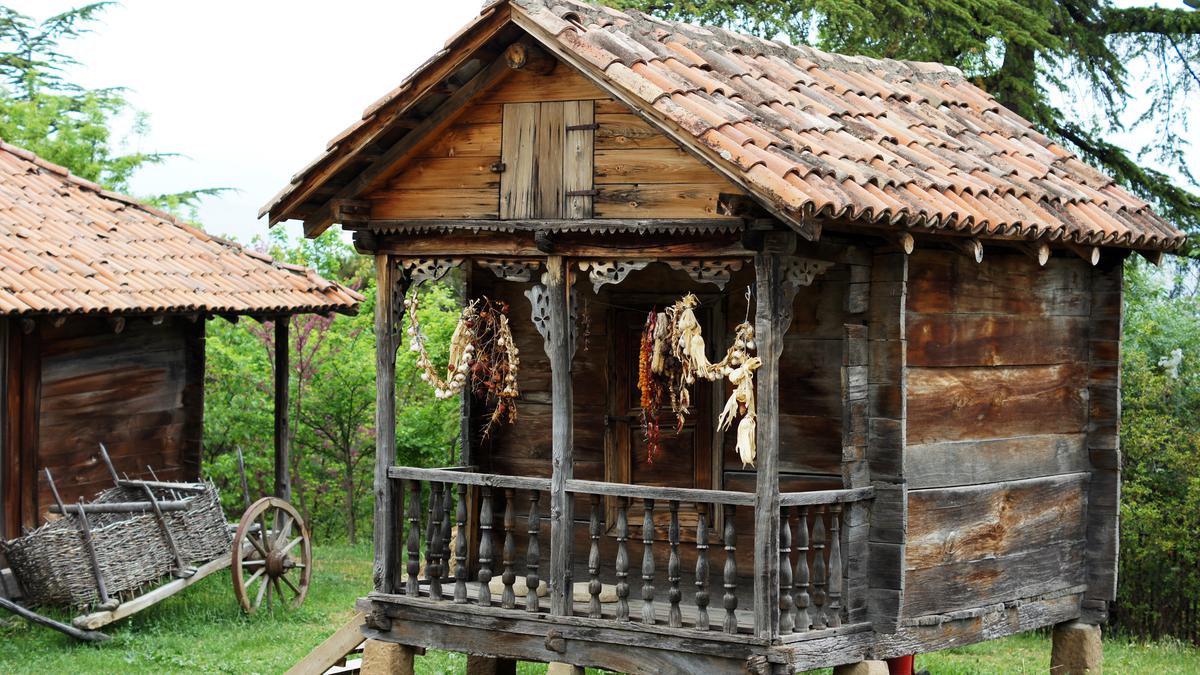
How they used to live in Georgia. Traditional Georgian dwelling.
The traditional Georgian dwelling corresponded to the landscapes and natural conditions of Georgia. Fortress houses were popular in the highlands. In the flat part there were houses of a residential type. Wooden houses were built in the Western part. In the South there are dugouts with a flat roof. Many examples of traditional houses have survived to our time, you will easily meet them on your journey.
The traditional Georgian dwelling (house and yard) fully corresponds to the geographical environment of Georgia. Historically, a type of dwellings corresponding to the landscape has been formed in the regions of Georgia.
In the mountainous regions of Georgia (Svaneti, Tusheti, Khevsureti), fortress houses consisting of several floors and built of cobblestones were common. Such buildings contained possible dangers associated with harsh climatic conditions.
Not all the watchtowers have survived to the present, but some of them can still be viewed in the listed regions of the country. And although most of them are closed to tourists in order to avoid further destruction, the atmosphere of antiquity is still fascinating.
In the plains of Eastern Georgia (Kartli and Kakheti), because of the relatively hot summer and cold winter, stone houses of the residential type were built. These places are filled with sights in the form of cathedrals, monasteries and fortresses. Many of them have survived to the present day, as the stone buildings were solid and reliable.
In Western Georgia (Imereti, Guria, Samegrelo, Racha-Lechkhumi, Abkhazia), due to the mild climate, wooden houses were built - "odes" - with wide balconies or huts woven from sedge. These are amazing buildings for the country, which are gently intertwined with traditional dwellings of other regions. Many cathedrals have been preserved in these parts of the country, some of them are more than 1000 years old. At the same time, they still function and look great.
In Southern Georgia, in addition to the "Shavashur ode" (common in Adjara and Samtskhe), there are dugouts with a flat roof (common in Javakheti, where the climate is harsh). Such houses are characterized by good thermal insulation. After all, it is quite difficult to maintain a comfortable temperature in the absence of proper heating with a piercing icy wind.

A significant element of the Georgian dwelling is the marani - a cellar for storing wine. Marani is not only a place where wine is made and stored. This is a traditional sacred place of the Georgian family, where the church wine kagor was kept. The invitation to marani was considered a great honor for the guest. In Eastern Georgia, the marani are closed, mostly of the basement type. In Western Georgia, marani and stood on an elevated place of the courtyard, and kvevri (large jugs for storing wine) with an open neck were buried in the ground. Among the numerous attributes of marani, it should be noted a press (for squeezing grape juice), a corner for vodka (in Kakheti it is called "Zaoti"), etc. marani stores a variety of items and utensils for winemaking.












56 comments
Log in to leave a comment
И, конечно, нам снова напомнили о любви местного народа к своему вину. В доме у грузинов имеется место для хранения вина - марани. Это важная часть жилья и чуть ли не святое место для хозяев, поэтому попасть туда гостю считается большой честью.
Интересно, сохранившиеся до наших дней постройки являются памятниками архитектуры или есть такие, где и сейчас живут обычные люди?
✅ Положительный момент статьи: Разнообразие традиционных грузинских жилищ и их соответствие ландшафту и климату регионов - это один из положительных моментов, которые подчеркивают уникальность культуры и наследия Грузии. Кроме того, сохранение и реставрация таких домов и сооружений является важной задачей для сохранения культурного наследия и туристического потенциала страны. Многие туристы приезжают в Грузию именно ради того, чтобы увидеть и почувствовать атмосферу традиционной грузинской культуры, в том числе и через ее архитектуру. Таким образом, сохранение традиционных грузинских жилищ и сооружений является важным элементом развития туризма и привлечения иностранных гостей в страну.
✅: Отрицательный момент статьи: К сожалению, в статье не было упомянуто о том, что многие традиционные грузинские дома и постройки находятся в плохом состоянии и нуждаются в реставрации. Также не было упомянуто о том, что многие жители Грузии предпочитают современные дома и не всегда сохраняют традиционные элементы в своих жилищах.
Несмотря на положительные и отрицательные моменты статьи, я благодарю автора на каталоге Мадлоба за интересную и полезную статью!!
ещё жили люди, следовали своим обычаям.Наверняка ещё в селениях сохранились такие дома и в них живут и не собираются покидать свой
родной край.Тема очень интересная.Про винные погреба и виноделие в Грузии можно прочитать много интересного.Статья познавательная мне
понравилась.